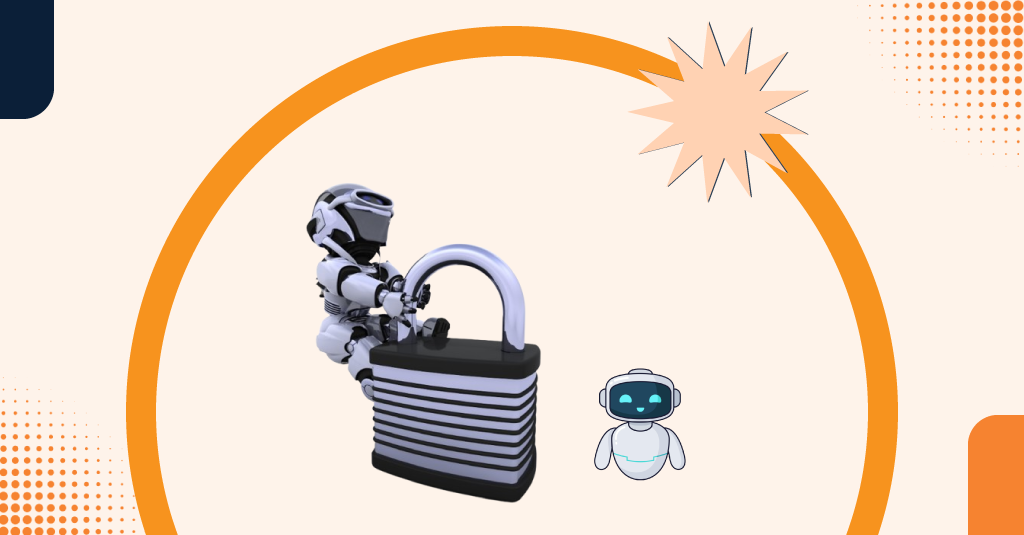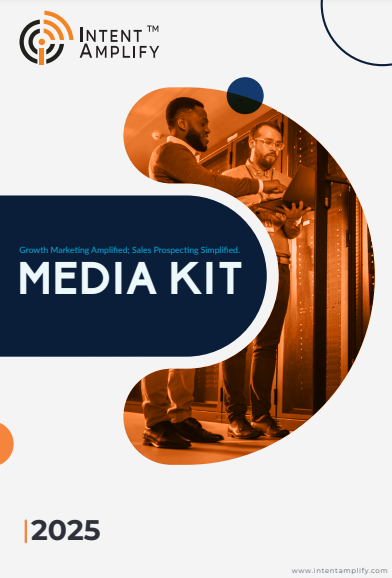
Why IAM (Identity and Access Management) Is Critical for Scalable SaaS Onboarding and Lead Qualification
- Last updated on: June 23, 2025
In today’s fast-moving SaaS landscape, seamless onboarding and lead qualification are no longer just process checkpoints; they’re growth catalysts. As businesses scale, the ability to manage user identities, roles, and permissions across various customer journeys becomes a strategic priority. That’s where Identity and Access Management steps in.
IAM is more than an IT function. It’s a building block that facilitates secure access, seamless user experience, and accurate lead routing, all of which have a direct impact on SaaS onboarding quality and lead qualification. As per Intent Market Research, the Identity and Access Management (IAM) Market was valued at USD 21.7 billion in 2023 and will surpass USD 38.0 billion by 2030, growing at a CAGR of 8.3% during 2024 – 2030.
The following article examines how IAM serves as the backbone of scalable onboarding and qualification processes, why it’s more important than ever in 2025, and how SaaS businesses can maximize its potential for improved business results.
Onboarding at Scale: The Hidden SaaS Challenge
Modern SaaS onboarding is meant to be quick, customized, and secure, sometimes for various customer segments, geographies, and regulatory environments. Without strong IAM, growth-oriented SaaS businesses face bottlenecks, inconsistent access experiences for users, and significant data security vulnerabilities.
Consider a startup with cloud-based HR software. As it grows in several regions, each new customer may have varying access controls: some need fine-grained access for HR, payroll, and compliance teams, others need single sign-on (SSO) and multi-factor authentication (MFA) at scale. Doing this manually isn’t possible.
That’s where IAM streamlines the complexity. Through automation of identity provisioning, role-based access, and authentication schemes, it allows SaaS platforms to speedily onboard tens of thousands of users without compromising security and compliance. A 2025 Forrester report says, SaaS providers employing IAM-onboarding experience a 45% decrease in enterprise client time-to-value and a 38% reduction in support tickets for onboarding-related issues.
The Lead Qualification Layer: Where IAM Adds Intelligence
Beyond onboarding users, IAM has a revolutionary impact on lead qualification and directing them through the proper customer experience. Historically, lead qualification has been based on static forms, manual scoring, and CRM filters. But when all touchpoints are digital in a SaaS ecosystem, identity signals can provide much more contextual information. IAM solutions support dynamic data capture at sign-up or login time, such as:
- Company domain and location
- Device metadata
- Role-specific intent
- Login behaviors and patterns
This identity-first context enables the marketing and sales teams to more effectively assess each lead’s fit and readiness. For instance, if a user logs in from a corporate domain, activates an SSO token, and accesses advanced settings, IAM can mark them as a higher-quality lead, even ahead of traditional lead scoring systems. By combining IAM with customer data platforms (CDPs) or CRM, SaaS businesses can enrich lead profiles in real time. This means sales reps are only interacting with high-intent accounts and not wasting cycles on unqualified leads.
Security-Driven Qualification: Trust Signals That Matter
Customers in a privacy-first SaaS world expect platforms to automatically prioritize security from the very first click. This expectation makes IAM-powered security signals a new lead quality metric. For instance, a likely enterprise customer who supports SAML-based authentication during trial setup or sets up role-based access within days will certainly be more committed and security-aware, plain indicators of a true prospect. By monitoring identity-related activities like:
- OAuth usage
- Custom role setup
- MFA activation
- IP allowlisting
SaaS vendors can leverage these trust signals as part of their qualification matrix. Not only does this refine the sales intent, but it also crafts a security-first narrative — something enterprise customers expect as part of their vendor evaluation process.
IAM and Automation: Minimizing Friction in the Funnel
Automation is the engine of modern SaaS growth, but its effectiveness depends on having reliable identity data at every step. IAM systems provide that data and the control logic to personalize and streamline the entire funnel.
Let’s consider an example. A B2B SaaS application combines IAM with its product-led growth (PLG) plan. When a user signs up through a Google Workspace account, IAM automatically detects the organization, creates default roles, provisions the appropriate modules, and marks the account as mid-market depending on user numbers. At the same time, this IAM action may initiate:
- A customized onboarding email series
- A sales alert in Slack if usage breaks thresholds
- A boost in lead score in the CRM
- A role-based feature suggestion in the UI
The outcome? Least friction for the user. Most clarity for sales. And business scalability in automation.
Compliance and Access Governance in SaaS Scaling
As SaaS providers grow, so does the necessity to comply with global regulations — from GDPR and HIPAA to SOC 2 and FedRAMP. Identity and Access Management plays a crucial role here, not only for security, but to prove compliance using auditable controls. IAM platforms can:
- Create logs of each access request
- Implement least-privilege access policies
- Automate user deprovisioning
- Manage data residency policies by region
This ability is critical to SaaS providers who are selling to enterprise and regulated markets such as fintech, healthtech, and legal SaaS. Without a well-established IAM model, large client onboarding is not just slower but also introduces the risk of compliance issues and reputation loss. Additionally, IAM ensures that marketing and sales teams access only the data they require, thus limiting internal data sprawl and the risk of privacy law violations.
IAM in the Context of ABM and Intent-Led Campaigns
Account-Based Marketing (ABM) and intent data strategies are built on accuracy. Accuracy requires clean, real-time identity information. Identity and Access Management has a key role to play here as well. For instance, when a SaaS app detects repeated logins from a target account domain, IAM can bring that information to the attention of the ABM team. If the Identity and Access Management layer shows them accessing higher-end features or setting up permissions, it’s a solid buying signal.
Here, IAM is an intent signal generator, providing behavioral insights at the account level that may prove more precise than third-party intent data in isolation. Through mapping IAM activity to personas of interest (e.g., IT admin vs. procurement vs. product user), ABM teams can tailor outreach, content, and timing more accurately.
IAM-Driven Segmentation: Scaling Personalization
One of the most fundamental challenges of SaaS is being able to deliver personalized experiences at scale. IAM enables marketers and product teams to segment users not only by demographics and firmographics, but also by behavior, role, and security posture. This enables them to:
- Serve onboarding flows according to access level (admin vs. user)
- Suggest features associated with permission levels
- Provide help content based on role
Direct leads into the appropriate nurture stream according to login type (e.g., SSO users vs. personal email). Personalization gets smarter, not more complicated. IAM-powered segmentation orients onboarding, sales qualification, and retention efforts around what users do, rather than what they say.
Best Practices to Leverage IAM for SaaS Growth
To unlock the full value of IAM in onboarding and qualification, SaaS teams must go beyond deployment. Here are some best practices:
- Integrate IAM early in product design: Identity and Access Management should not be an afterthought or security bolt-on. It must be part of the UX and onboarding strategy.
- Align IAM with GTM tech stack: Ensure IAM data flows into marketing automation, CRM, and analytics tools for real-time visibility.
- Leverage IAM events as qualification triggers: Create playbooks that consider identity events (e.g., role assignment, domain login) as sales engagement triggers.
- Make security posture a scoring factor: Use IAM trust behaviors as part of your lead scoring models, particularly for enterprise sales.
- Educate users on IAM capabilities: Train users on setting up SSO, MFA, and role management upfront. This increases both stickiness and sales confidence.
Future-Proofing SaaS Growth Through Identity Intelligence
By 2025, SaaS platforms no longer compete based on feature sets; they compete based on how effectively they deliver secure, personalized, and scalable experiences. Identity and Access Management is at the heart of making that possible. Onboarding the next thousand users, or qualifying high-intent leads from international markets, IAM provides the infrastructure, intelligence, and trust to scale. SaaS pioneers who view IAM as a growth driver, not only as a security feature, will have the clarity, control, and confidence to succeed in a more sophisticated digital world.
How Intent Amplify Can Help You Win with Secure Onboarding & Lead Qualification
Intent Amplify doesn’t just understand Identity and Access Management, it leverages it to empower smarter SaaS growth. By integrating identity events like SSO activation, custom role assignments, and MFA enablement into your onboarding flows and CRM, Intent Amplify transforms access data into actionable, real-time lead signals. This enables frictionless user experiences and ensures sales teams engage only with high‑intent, security‑focused accounts, all while automating governance and maintaining compliance from day one
FAQs
1. What is IAM, and why is it vital for SaaS onboarding?
Identity and Access Management is a framework of policies, technologies, and processes that ensure the right individuals have appropriate access to resources at the right times for the right reasons. In a SaaS context, IAM automates onboarding processes—like provisioning roles, activating SSO/MFA, and structuring permissions—so customers can onboard quickly and securely at scale.
2. How does IAM improve lead qualification for SaaS platforms
IAM captures first-party identity signals—such as domain, role, login patterns, and security posture—to enrich lead profiles. For example, enabling SSO or creating custom roles signals high intent, enabling real-time lead scoring and better sales engagement.
3. What role does automation play in IAM-enabled onboarding and funnel flows?
IAM automates user provisioning, role assignment, and security configuration. It triggers workflows like personalized onboarding emails, CRM lead boosts, and feature flags immediately upon key identity events, reducing friction and increasing conversion efficiency.
4. How does IAM support compliance and security governance for SaaS?
IAM enforces least-privilege access, tracks audit logs for each action, automates user offboarding, and supports regional data residency. These features help SaaS providers meet standards like GDPR, SOC 2, HIPAA, and pass audits during enterprise onboarding.
5. Can IAM be used for both workforce and customer identity?
Yes. Workforce IAM manages internal staff access; CIAM (Customer IAM) governs customer identities. Together with PAM (Privileged Access Management), they ensure comprehensive coverage across SaaS ecosystems, providing secure and efficient management across both internal and external users.




